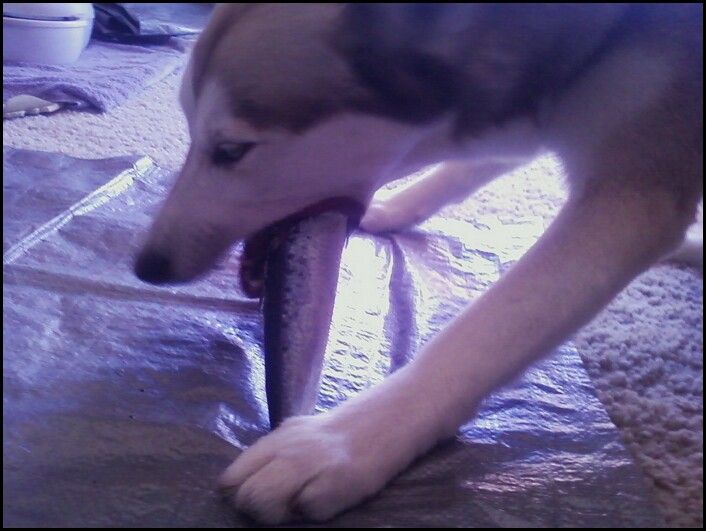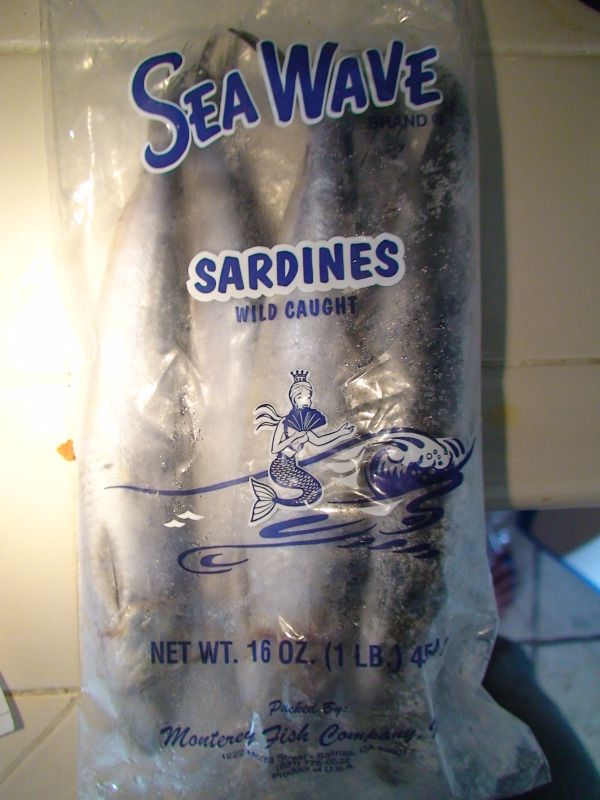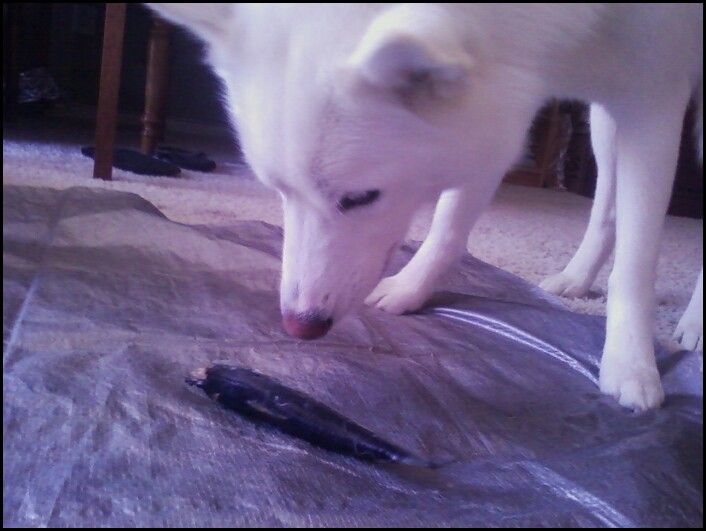To dive right in, one of the most common things I feed is chicken leg quarters. They are cheap and a good source of edible bone.
Here is Denali eating a chunk of llama neck. I fed her an entire half of a llama including half of every organ.
Here is bag of llama stomach, or as my awesome sister-in-law labeled it, Llama Tummy & Poop! Stomach is fed as meat, not organ. This was quite smelly as it has semi-digested grass and hay in it. It smells like manure to be blunt. The dogs loved it. I left it up to them if they wanted to eat the grass and hay or pick it out. They ate it all.
Here is a leg of the llama. Leg bones of large animals are very, very hard and dense and are known to damage or break teeth. Denali was not allowed to gnaw on the bone. She stripped the tendons and the little bit of meat off, ate the foot, then I threw away the bones.
Introduction of beef kidney. Introduce organs in tiny pieces. I was curious if she would eat it or not, but nope! You can tell she is not impressed as her lip is curled up. She would not eat it thawed at first so I cut it into smaller pieces and fed it semi-frozen.
Beef tongue and beef heart frozen together. For my dogs, the portion size for each day is around 14 oz. Almost one pound (16 oz). So when I get something like, say, a beef heart, that is 2.9 lbs (46.4 oz), I cut it into pieces that are about 14 oz each. That gives me 3 meals, plus about an extra 1/3 of a meal. What do I do what that little bit? I put it with other little bits. Feeding it to smaller other pets like cats or ferrets is also an option.
Beef ribs! Feeding on the kitchen floor is not ideal for me. I usually feed on a tarp or outside but we had recently moved and I threw out the old tarp, and outside was not dog proof yet. I also don't like feeding on hard floors because the dogs slip and slide and it's really awkward for them to eat. When they are done I clean the floors so at least I get clean floors out of it! They always make a bloody mess all over their legs when eating ribs so they go straight into the bathtub after eating.
Whole wild bunny. I froze it for a few weeks to kill any parasites then let her eat it. The only part of the entire rabbit that she did not eat was the stomach.
Pork roasts (shoulder, arm, picnic, butt, shoulder blade roast). I often cut them into meal-sized portions but sometimes will let the dogs eat off the whole thing.
Whole chicken. I tried it first with feathers on. Denali plucked hers and spit out the feathers. Kaytu ate the feathers and then threw them up. I decided the mess of both wasn't worth it, so I now skin chickens when I get them whole with feathers. Skinning them is easier, faster, and less messy than plucking. I skin them when they are mostly thawed as it's nearly impossible to skin it while frozen, and when totally thawed it's more slimy and icky.
Video of Denali eating a whole store-bought chicken.
Kaytu eating an egg. She breaks it open by dragging it along the ground with her paw.
When Kaytu was first offered raw chicken her first day with us she didn't want to eat it. One way to help hesitant dogs is to cut the meat into smaller pieces and spread them out a little on a plate, cutting board, baking sheet, or other surface. Here is some cut up chicken, I think from a leg quarter and breast.
**Updated 3/28/2012**
I took a few more pictures last night.
However, I noticed there seemed to be a whole lot of hearts in the packages which is why I grabbed them, as I originally wasn't planning on it that shopping trip. I can't resist when meat looks extra good or is on sale.
I find chicken liver in these containers.
Beef kidney.
 |
| Inside of a kidney. All the white is normal, it is quite hard. It's common to have hard white spots on the outer part as well. |
 |
| Outside of a kidney |
A few more
 |
| Pork Tails! I had never seen them so thought I'd give them a try. They are of course mostly bone, so will be fed when a meaty meal is also fed. |
 |
| Beef heart |
 |
| Beef heart inside |
 |
| Beef heart outside |
 |
| Beef heart It is also common for there to be white "stringy" bits of connective tissue. Don't worry, it's not worms or anything bad! |
 |
| Pork roast, Boston Blade. Also called Boston Butt. It's the shoulderblade and surrounding meat. |
 |
| Pork arm roast |
**Updated 8/7/12**
Whole sardines
 |
| *Use of paws optional. |






























No comments:
Post a Comment